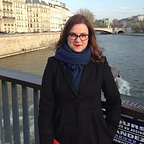Cancer Research UK ran our first un-conference, and this is what happened.
A few weeks ago, I wrote a blog post about our decision to run two un-conference events to help us co-design the next stage of our digital transformation journey at Cancer Research UK.
The first event took place on 12 June, with people from across our charity . Now we’re preparing to run our second event, which will be open to people from across the charity sector. So here’s a few of my highlights and lessons learnt from the first event.
- People participated actively and openly
One of my worries was that only ‘the usual suspects’ (the really enthusiastic, really confident change agents who always speak up in meetings) would suggest topics for discussion. But on the morning of the un-conference, I quickly realised that I shouldn’t have worried: we had way more suggestions for topics than sessions we could run. With 40 people attending and representing each one of CRUK’s directorates, we ran 10 sessions, asking very bold questions like ‘What does digital mean?’, ‘Who owns our website’, and ‘what’s our governance and culture look like?’. And in the sessions, people spoke up openly and transparently, leading to some very honest and productive discussions on what works, what’s broken, and what we can do to fix it. Together.
2. ‘Feels very democratic’
Towards the middle of the day, I hung a flipchart sheet on a wall so that people could start sharing their feedback with me: what was working well? What could we improve for next time? My favourite piece of feedback was a post-it where someone wrote ‘feels very democratic’. This was definitely our intent in running the event as an un-conference, so it felt amazing to know that we’d reached it. Our challenge now is to maintain that feeling with lots more people in the room who don’t know each other as well as the people from the first event.
How do we ensure full democratic participation for everyone, and create the psychological safety to make the next event as open and transparent as the first one?
3. Facilitation made easier
As much as we emphasised that every session’s leader could use any structure they preferred in their slot, and that no one needed to be a professional facilitator, some of the attendees were still a bit reluctant to propose a session until others offered to help them as ‘facilitation buddies’. So to make this even easier, facilitation pairing is something we’ll now offer explicitly at the next event, to ensure that a (perceived) lack of experience in facilitation isn’t an obstacle to good topics being discussed.
At the other end of the spectrum, we had some sessions run by experienced facilitators, and many of them enthusiastically tried out some Liberating Structures. While this was very interesting, and it was great to see people feeling comfortable to experiment with new ways to stimulate thinking, as one of the attendees told me, it did lead to perhaps too many sessions having the same structure. So next time we’ll ask facilitators to check with the room before settling on a specific way of running their sessions.
So what’s next for our un-conference?
On 9 July, our second event will bring together CRUKers with representatives of over 30 charities. It’ll be a chance to widen and challenge our thinking beyond the walls of our charity, and for us to do so in the open.
I’m sure it’ll feel uncomfortable at times, and I’m slightly worried about the amount of post-its and coffee I will need to facilitate the day — but I can’t wait to see what happens.
